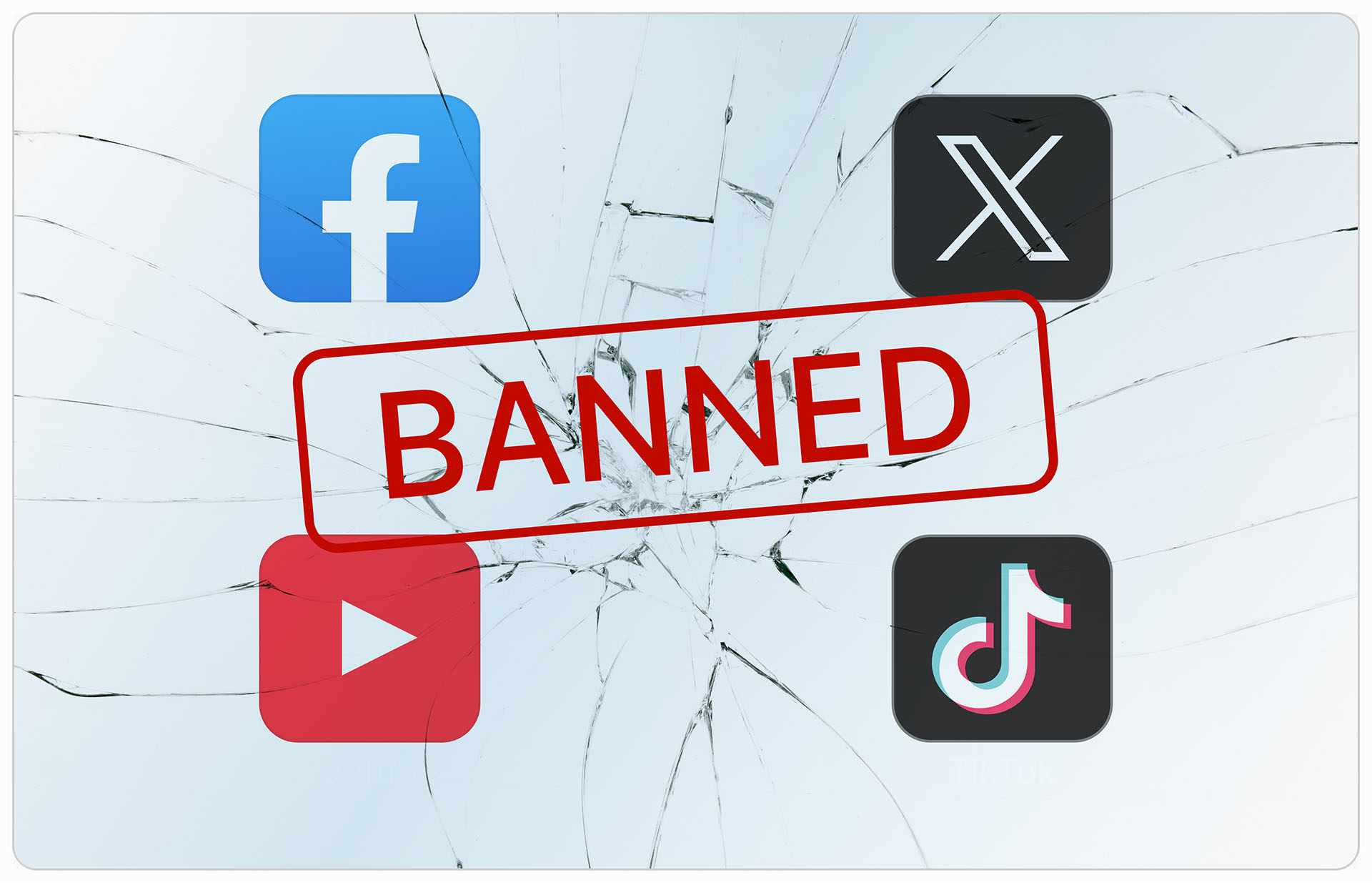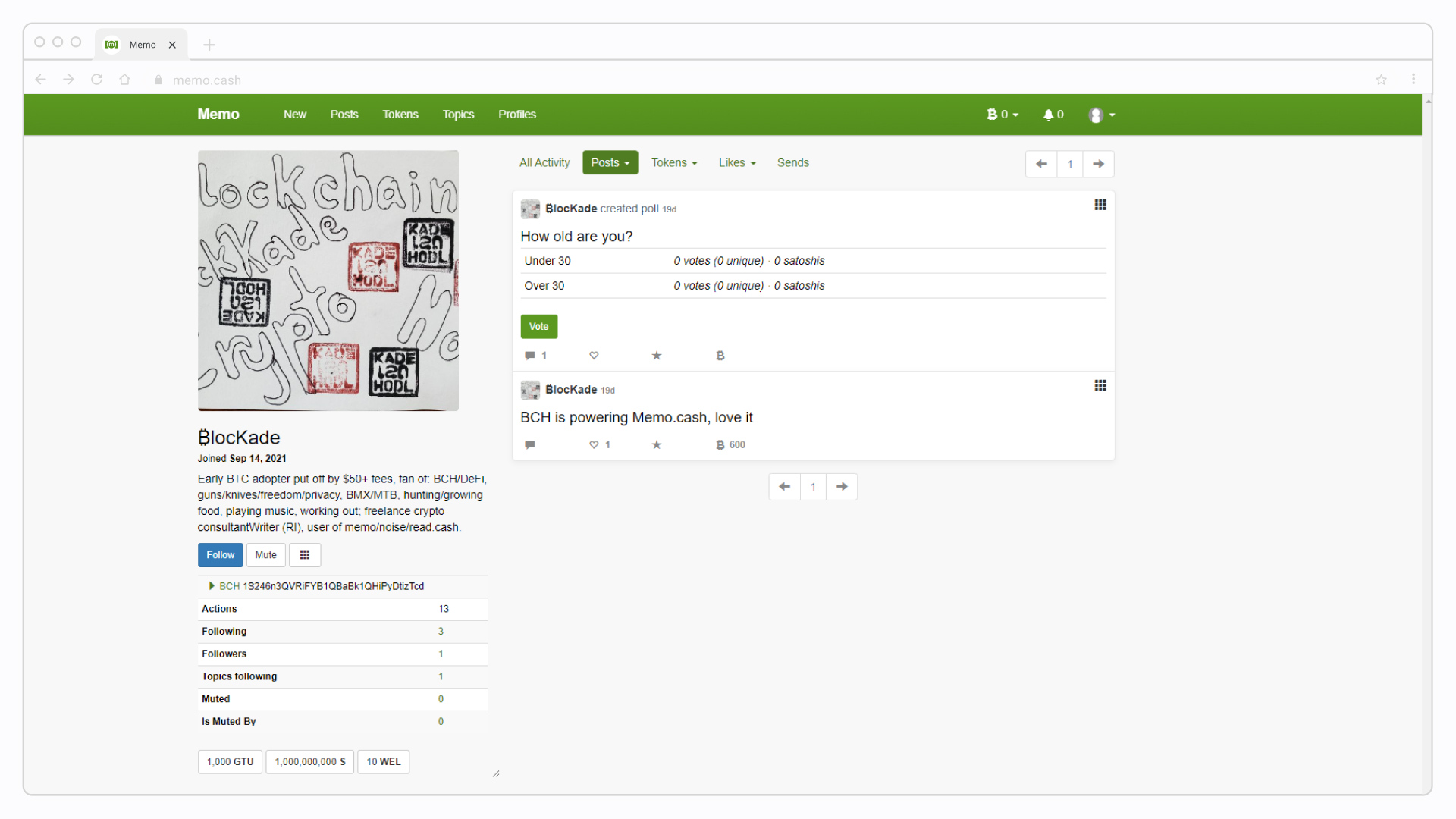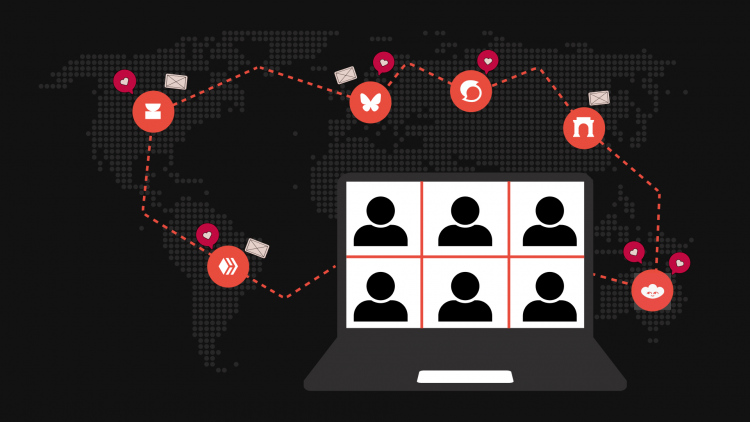Wouldn’t it be nice if you could completely customize your social media experience?
We thought so. On many decentralized alternatives to the social media behemoths, you are now being given the technical ability to make that a reality.
By granting you ownership of your social graph, these alternative social media platforms are putting users back in charge. But what exactly is a social graph? And why does their control matter so much?
What is a social graph?
A social graph maps your relationships and activity on a social network. You could visualize your social graph as a bunch of lines connecting you to your friends, followers, and people who follow you.
Your social graph is constantly being updated as you use social networks. Often, they know so much about you that it seems “creepy,” and that’s an understatement. Facebook can predict whether you’re going to fall in love, break up, and a whole lot more.
How does a social graph work?
Social graphs improve the social media experience by showing users what they want to see when they want it. Centralized companies use social graphs to monetize their users through targeted advertising.
Social media is useful — and often addictive — due to the way your friends, contacts, content, and interactions are packaged to you. A social graph draws helpful connections between all your online relationships on the social media platforms you use.
This social spiderweb of digital connections is what makes some social media platforms so useful. It’s also why you may be reticent to start over on a new platform, even if you don’t like how a social media platform is operating.
On most centralized options like X and Meta, when you abandon your social media profile — you also have to abandon its social graph and all its associated data-laden connections.
You don’t control your social graph on Facebook
First mentioned by Mark Zuckerberg in 2007, social graphs are designed to give users a richer user experience (UX). While Meta’s platforms, Facebook and Instagram, use social graphs to enhance your UX, it also controls your social graph.
In other words, if you get banned from a platform or choose to leave voluntarily, you must start over. You would need a new profile on a new platform that starts without connections, view counts, or a curated news feed. This creates a “lock-in effect” that makes it costly to switch platforms.

Some readers may remember the early 2000s when you couldn’t switch phone carriers and keep your number. Many stayed with phone companies and plans that no longer served them to avoid the hassle of changing their phone numbers. The lock-in stickiness of social media networks is much higher than telling all of your phone contacts, “867-5309 is my new number.” 😃📳
Platforms like X, Facebook, and YouTube maintain control of their users’ social graphs to monetize their platforms. The social graph on Facebook allows Meta to sell user data, create targeted ads, and leverage collective social graph data for additional monetization pathways. This strategy of targeted surveillance and ads is commonplace amongst social media sites and search engines like Google — so please use a dVPN.
As the adage goes, “If something is free, you are the product.” Yet, social media economics are being revolutionized through Web3 social graphs.
Web3 social graphs give users power
A social graph represents your digital identity and can be used to keep you on a platform longer – or prevent you from abandoning a platform altogether. You can’t port your social graph (friends, data, connections) from one social platform to another. At least not on legacy platforms.
Web3 social graphs give you command of your account and all the underlying data. Not only can you control how your social graph is used on one decentralized social media (DeSoc) platform, you can also transfer your social graph to an entirely new user interface (UI) or social media platform.
A DeSoc graph is distributed across numerous blockchain nodes and runs independently. This decentralization offers users more control over their data and helps empower online communities. It also prevents censorship and DeSoc platform downtime through online redundancy.
The benefits of decentralized social graphs include:
- Privacy: Decide who can view and access your personal information. Privacy customization allows you to grant more information to close friends and family while keeping this data private to others.
- Platform portability: Imagine being able to move to an X or Facebook alternative while maintaining all your contacts and profile data. Web3 social graphs make it a reality by giving you the power to move all your data to a new blockchain or DeSoc platform.
- Censorship resistance: Have more control over your profile and content. No centralized entity can ban you or remove your posts.
- Customization freedom: Decide which applications you use and don’t use. Create customized policy rules for your connections and help create platform rules through customizable options.
All of these aforementioned benefits fall under the wider umbrella of user control. With complete ownership of your data, creators finally leverage their social media presence and align it with your goals, values, and personal preferences.
- Do you want less censorship? There’s a DeSoc platform for that.
- Would you prefer more content moderation? There’s a Web3 platform for that, too.
- Do you desire enhanced and customized privacy settings? No problem.
Social graphs and DeSoc make these questions philosophical – not technical.
Decentralizesd social media lacks users and monetization
Wide-ranging user control is a huge advantage for Web3 social graphs. However, the lock-in effect has created lackluster adoption. Social media giants also benefit from the network effects of having a huge user base. A study from 2022 showed that 4.7 bil people use social media. Today it’s probably more.
Agile businesses, entrepreneurs, and startups (like Meta circa 2004) benefit from the first-mover advantage. As an early user of DeSoc platforms, I’ve experienced what I dub the “first-mover disadvantage” for participants of blockchain-based social platforms. Let me explain.

I was an early user of Memo.cash, which could be thought of as an onchain version of Twitter powered by the Bitcoin Cash blockchain. For fun, I revisited my account recently and made a few posts that didn’t get much engagement — and that’s an understatement. 🙃
Other early examples of DeSoc platforms include Steem, Peepeth, Minds, Read.cash, and many others. Without large user bases, using these platforms was a lonely experience.
Many early DeSoc users kept their standard social media accounts and used the DeSoc alternatives to repost content or as an emergency backup account. Many had a hyperfocus on crypto topics that would be offputting if you wanted to talk about art, music, travel, or any number of non-crypto-related topics.

Some of these early decentralized platforms experienced growth, a plateau, and then a decline as users left them. Reasons for leaving them include a lack of other users, waning engagement, and an inability to monetize. Based on usage, many of these platforms are essentially dead, while others have shuttered their digital doors completely.
In addition, some DeSoc users complain that these early alternatives lacked the UX and UI refinement they had grown accustomed to. Some DeSoc platforms require you to connect to a crypto wallet to create a user profile — although this varies by platform. Platforms may also charge transaction fees that you must pay in crypto. While this beneficially deters bots and spam posting, it also creates user friction for those who have grown accustomed to free social media platforms.
Next-gen DeSoc platforms Farcaster and Lens Protocol
Things have changed since. Content creators are leveraging DeSoc platforms to build their online presence, reach new audiences, and monetize their accounts. This is creating a Web3 creator economy that utilizes platform openness and transparency. Granting users control of their social graphs is becoming a compelling reason to try out these novel platforms.
Lens Protocol has an entire ecosystem of decentralized applications (dApp) that can be seamlessly integrated into your social media experience by transferring your social graph to your preferred dApps. It allows for monetization via fees, subscriptions, and non-fungible token (NFT) sales.

Farcaster is a mobile-friendly DeSoc platform that is akin to a decentralized X — with a few Web3 bells and whistles. Most notably, it allows for the creation of “Frames,” which are dApps that can be run directly in the Farcaster feed. This developer-friendly feature allows Frames to generate revenue for their creators without users needing to visit another site.
These are just a couple of examples of DeSoc platforms that offer users social graph ownership.
With that, you’re ready to dig into the content revenue streams that have opened up thanks to DeSoc. Move forward in the Track to check out those business models.



